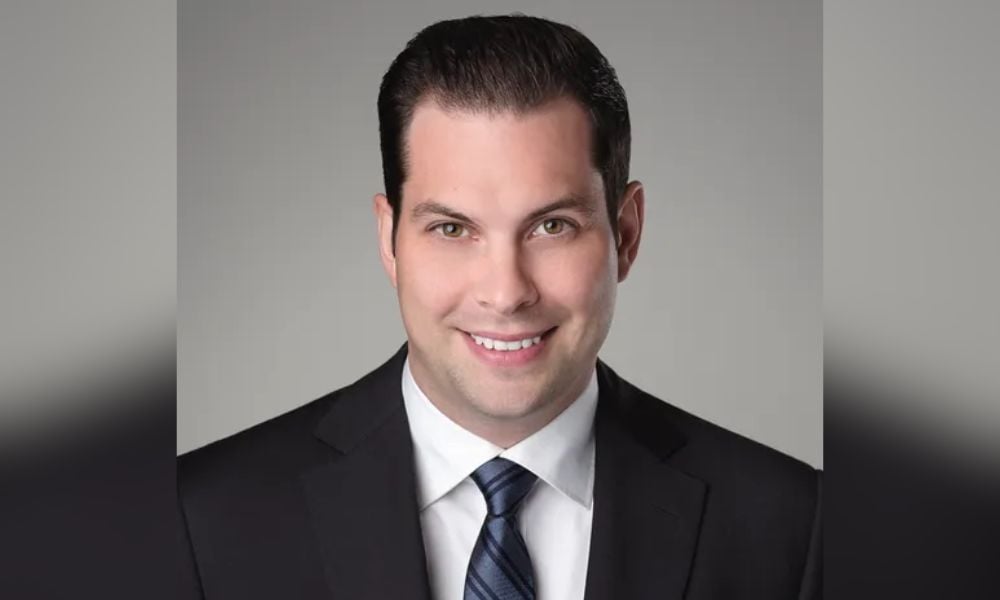Young lawyer who won $3.2 million award in 2022 wins appeal on who is to blame and by how much

A young lawyer who last year was awarded a $3.2-million award after being injured in a car accident in 2018 has also successfully appealed on the question of which parties should be held responsible and how much liability each should bear – the woman who hit her car from behind and the man who passed her on the shoulder to her right.
The court of appeal for British Columbia ruled that the trial judge, in this case, erred in determining and applying the necessary standard of care in ruling that driver Daniel Pederson was not negligent when, in response to his anti-lock braking system activating, he drove onto the shoulder to pass the appellant in a bid to avoid his car colliding with another.
It added the trial judge erred in ruling that Pederson’s move onto the shoulder “was necessitated by exigent circumstances.”
Nicholas Peterson, lawyer for the plaintiff, Casey Helgason, says the case presented an opportunity for the appeal court to revisit the “agony of the moment doctrine” and what the doctrine legally requires. He notes that the appeal court held a driver cannot be excused from liability - nor claim an “agony of the moment” - when their conduct created the very hazard or peril they sought to avoid.
The three-judge panel decided that proper standard of care obliged Pederson to stop behind Helgason’s car and that this breach contributed to Helgason’s considerable injuries.
Also, the appeal court ruled the trial judge erred in determining legal causation by requiring that the precise mechanism by which the injuries occurred be “reasonably foreseeable” rather than the actual injuries.
In apportioning liability, Justice Lauri Ann Fenlon, writing on behalf of the appeal court, concluded the driver who rear-ended Helgason was 60 percent liable and Pederson and the owner of the vehicle he was driving, his employer, KC’s Environmental Service Inc., were 40 percent liable.
Helgason was driving on a single-lane road near Golden, slowing down and turning on her left turn signal before she stopped at an intersection. The other two vehicles were travelling behind her in snowy winter conditions.
As she was about to start her turn, she noticed a vehicle passing her on the shoulder to her right and another vehicle, driven by Marla Rondeau, approaching rapidly from behind.
Realizing that Rondeau’s car would hit hers, she turned her steering wheel slightly to the right to avoid being pushed across the highway into oncoming traffic, calculating that it would be better to be pushed into the snowbank on the shoulder.
Helgason’s car was struck first from behind by Rondeau’s vehicle. The force of the collision pushed Helgason’s vehicle to the right, where she struck Pederson’s truck, which was on the shoulder of the highway. That second strike caused Helgason’s car to be propelled back across the highway, where it came to rest in the ditch.
Rondeau admitted liability; Pederson did not.
Helgason’s vehicle and the vehicle driven by Rondeau were both written off because of the accident. Helgason suffered neck, shoulder, and back injuries, as well as daily headaches and post-concussion symptoms.
She was in law school at the time of the accident, and although she eventually completed her studies and qualified as a lawyer, she has been unable to work full-time due to her symptoms.
Pederson testified that as he approached the location of the accident, he came over a crest in the road and saw Helgason’s vehicle ahead of him with its left turn signal activated and brake lights on. The crest is about 900 metres away from the intersection. He estimated that her vehicle was about 150 metres ahead of him when her brake and signal lights came on. He was also aware of a vehicle following closely behind him.
The trial judge concluded that Helgason had not proved that Pederson had operated his vehicle in a manner that breached the applicable standard of care. He found that Pederson was not driving too fast for the conditions because he was going 20 km/h below the posted speed limit to account for the prevailing conditions and had not experienced any skidding or sliding before braking upon seeing Helgason’s turn signal and brake lights.
Nor did he find Pederson to be following too closely, concluding Pederson was well behind Helgason, to the point that it “cannot be said” that he was “following” her within the meaning of s. 162 of the Motor Vehicle Act.
As well, the trial judge found Pederson was not attempting to pass Helgason on the right, which contravenes the MVA, but was “engaged in evasive action.”
The judge concluded Helgason had not proved that Pederson breached the standard of care and went on to conclude that even if Pederson had breached the standard of care, Helgason had not established that he caused or contributed to the accident that led to her injuries. He also found that it was not reasonably foreseeable that Helgason would suffer injuries because of Pederson driving around Helgason onto the right shoulder.
Justice Fenlon noted the trial court judge did not fully recognize the obligation of a following driver to stop behind a vehicle “even when the stop is sudden or unexpected—which was not the case here as Helgason signalled and gradually slowed over several hundred metres.”
There is also a long-standing principle “that a following driver who cannot stop in time and collides with the car in front will generally be found to be at fault—or more precisely, to have breached the standard of care required.”
The circumstances in this case are not as straightforward as if Pederson had driven into the back of Helgason’s car—he went off the road and drove around her, Justice Fenlon wrote. However, Pederson also testified that he probably could have stopped in time but was not certain he could.
Justice Fenlon added: “The respondents were left to argue contradictory positions: Pederson needed to establish that he was far enough back to rebut the natural inference that he was travelling too close or too fast to be able to stop, but close enough to make his decision to leave the roadway and pass on the shoulder seem reasonable.” These contradictory submissions “found their way” into the trial judge’s reasoning.
“Because the judge did not identify the correct standard of care, he erred in finding that Pederson had acted reasonably when he touched his brakes only once and then, because his [anti-lock brakes] engaged at that single point on the highway, decided not to make any further attempts to come to a stop on the road.”
Justice Fenlon also noted the substantial distance between Helgason’s and Pederson’s cars and the evidence presented that Pederson was travelling at the relatively modest speed of 80 km/h.
“Given the distance available to Pederson to bring his vehicle to a stop, it was an error for the judge not to consider whether one attempt to brake on the road, before taking ‘evasive’ measures such as driving on the shoulder, met the standard of care of a driver exercising due care and attention. In my view, the standard of care expected of a driver at that point included attempting to brake more than once.”
As for the decision to steer onto the shoulder to avoid his vehicle being hit, the appeal court ruling disagreed with the trial judge’s ruling that this action did not breach the standard of care because he found Pederson was not attempting to pass but was taking an evasive action to avoid a potential collision in light of the sudden situation that he found himself in, an “agony” of the moment.
Lawyer Peterson says: “It is the preceding conduct of the driver in the lead up to the collision that must be confronted and assessed by the court if that doctrine is relied on by a driver."
For a plea of the agony of the moment to apply, lawyer Peterson says, the party relying on it must demonstrate their impugned conduct and situation arose from the fault of another, or, in Justice Fenlon's words, "at the very least is not attributable to the antecedent negligence of the defendant,” and their conduct was a response to an unanticipated and sudden emergency.
Justice Fenlon also wrote: “In other words, drivers cannot claim to have met their standard of care if they have, through their own negligence, created the very crisis that leads to the need for precipitous action.”
Pederson breached the standard of care in “failing to apply his brakes more than once given the distance available to him created the exigency that required him to drive around Helgason.”
Lawyer Peterson says this case is a good reminder “that the obligation to stop behind a car in front is not avoided simply because a car ahead is too far ahead." While proximity to the car ahead factors into the analysis, the obligation is owed if, in the sequence, you are the following car.
He notes Justice Fenlon writing in her decision that to comply with the duty owed to motorists ahead, a following vehicle must be able to come to a stop, and the standard of care is not met by a single attempt to stop.
Lawyer Peterson notes that “obligations arising from a requirement we not follow a vehicle ahead too closely still apply even if that car ahead could be considered quite distant in front; it’s an obligation which always includes being able safely bring your vehicle to a stop behind the car ahead.”
Regarding causation, the trial judge found it was not a “reasonably foreseeable” outcome that Helgason would be injured because of being propelled into him after being rear-ended by Rondeau.
However, Justice Fenlon wrote that “but for Pederson’s vehicle passing Helgason on the right,” her car would not have collided with his in the manner it did or been pushed back across the highway into the ditch—a collision that the appeal court found contributed to Helgason’s injuries.
“In my respectful view, the judge erred in finding that the injuries experienced by Helgason were “too unrelated” to Pederson’s wrongful conduct in driving around her. However, rather than sending the matter back to the lower court on apportionment, “given the length of time that has passed since the accident, and in the interests of finality, I would apportion liability 60 percent to Rondeau and 40 percent to Pederson.”










